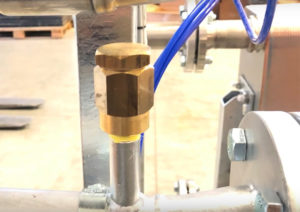

Thermal transfer between gas and air having the same pressure behaves in principle exactly the same as low viscosity fluids: a plate heat exchanger is as well the best and most favorable solution. It is crucial that the gases have a certain pressure level, because working at ambient pressures the specific volume would require channels and nozzles dimensions in such a way that the plate solution could become no more interesting economically, due to the high pressure drops involved with this construction typology. Air cooling usually requires an exchanger with a wide flowing section for the fluid. With low pressure fluids, it is possible to employ radiators, but with increasing pressure levels the right choice are shell and tube exchangers or plate heat exchangers (in case of compressed air), often supplied in casings equipped with fans, conveying air on the finned pack.
Vapor can then also be employed in a heat exchanger to obtain a warm fluid, or heated fluids such as water and oil for example, with the advantage that steam can be easily managed using proper actuated valves. This kind of solution requires a careful study of condensate discharge pipes, implementing a vacuum breaker valve in order to avoid partial flooding of the exchanger due to an incomplete draining of condensate liquids. This could generate steam bubbles at high pressure, causing micro-explosions within the exchanger that would soon cause the breaking of the exchanger itself.
